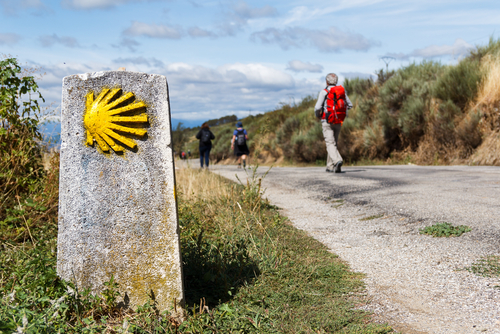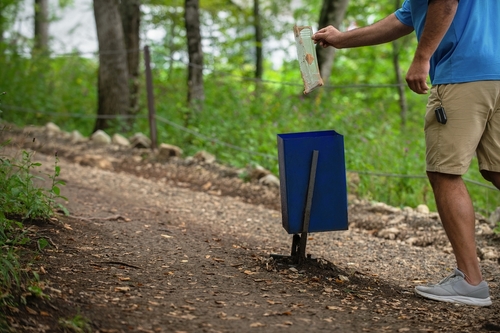Article translated by an automatic translation system. Press here for further information.
How to make the Camino de Santiago in a sustainable way
07/11/2023
 Image:
gregorioa
Image:
gregorioa The Camino de Santiago, a pilgrimage route that attracts more people every year trying to live this incredible adventure.
Each year, over 300,000 pilgrims are attracted to the Camino de Santiago. The stages, which can vary depending on your level, and the unpredictable climate in the northern area, will be the hardest thing to the Plaza del Obradoiro de Santiago de Compostela. And a long desk with people you just met is one of the most common things.
The environment through which the road runs is very sensitive to the impact of people, hence the importance that as a pilgrim you try to be as sustainable as possible, so that behind you only the traces you leave with your shoes.

The most important tips to keep the Camino de Santiago as you found it are these:
Avoid plastics
There are plastic bags, everywhere. The best way to eradicate them is not to use them. You can store your dirty clothes in bags made of fabric or canvas, as well as more resistant, you can use them every time you want.
If you want to store the food or snack, a reusable brace is your solution. Your food will be in perfect condition.
Remember in hostels that you do not want single-use plastics, such as straws, glasses or plates, that you prefer to use glass or other reusable material.
Reusable water bottle
It is one of the essential goods for pilgrims of the Camino de Santiago. Instead of buying bottles in each store, it is much better to go with your own bottle, which you can fill in the fountains of the Camino de Santiago. The Cloca Water APP shows where the nearest source is. In addition, depending on the material your bottle will keep the water cold for longer, take advantage of the shelters to make them fresh when you start.
The waste bag
There are many kilometers of the Camino de Santiago where not finding trash is the most normal. We recommend carrying a bag to store the waste you are generating, the skin of the fruit, the shells of nuts, food waste, food packaging… keep everything and recycle it when you can.
Don't walk outside the trail
Year after year thousands of pilgrims make the Camino de Santiago. They follow the signs for the route. If only a hundred chose to cross an area to discover the feeling of walking out of the way, they would mark a new route, which would follow hundreds more later, eventually destroying the landscape and modifying the original idea of camino.Recuerda that following the road is one of the best ways to respect the environment
you walk through.
Diversity must be respected
You will join pilgrims from all over the world, each person has their own motivation to make the pilgrimage. Respect for other people, both those who make the Camino de Santiago and those who live there, is very important. It doesn't cost anything to have education with people and their beliefs.
Buy local product
It makes no sense to buy exotic fruits in the villages of the Camino de Santiago. Make the most of the nearby products you can find. Meats, vegetables, as well as top-notch local sausages, enjoy with the advice of countrymen and try the products you find on the Camino de Santiago.
The most precious asset: water
As you know, we talk about a scarce good, although you see it in abundance in rivers, remember that you have to be careful with the environment not dumping soaps in them. Detergents, as well as any polluting product, cause damage to the aquatic flora and fauna of the area. On the Camino de Santiago there are multiple rivers and lakes where you can bathe and enjoy, but remember not to use chemicals.
Fire care
We have been setting fire on Galicia for several years, as well as Northern Portugal. The Camino de Santiago is very sensitive to flames, remember not to barbecues, nor to make fire outside the delimited areas for it. Avoid throwing the butts to the ground, place them in your waste bag.
Do not alter the Camino de Santiago
Although you will see flowers, animals, stones and many more that will resemble you a beautiful memory of the Camino de Santiago, remember that the best memory will be the one that has the least impact on the Camino. A photo is enough and thinks that if each pilgrim took a stone back, we would have a Camino de Santiago without stones.
As you can see, the SUSTAINABILITY of the Camino de Santiago is vital for future generations to enjoy it, as you can. So remember that the only footprint you should leave are the footprints of your shoes as you move along the way. Already since 2015, Ecoembes launched an environmental project, in which awareness to preserve the Camino de Santiago, recycling and fighting waste.